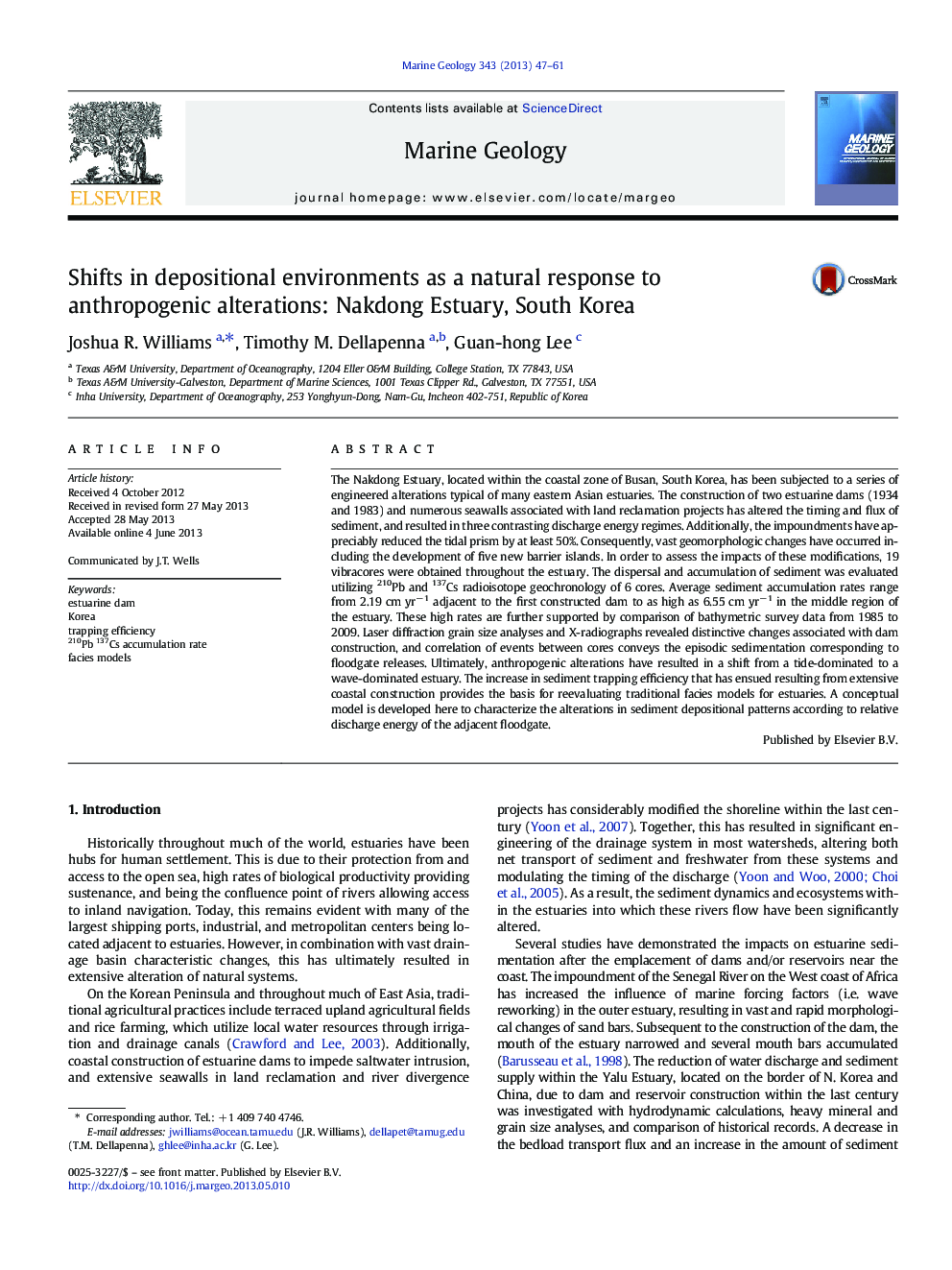| Article ID | Journal | Published Year | Pages | File Type |
|---|---|---|---|---|
| 6441715 | Marine Geology | 2013 | 15 Pages |
Abstract
The Nakdong Estuary, located within the coastal zone of Busan, South Korea, has been subjected to a series of engineered alterations typical of many eastern Asian estuaries. The construction of two estuarine dams (1934 and 1983) and numerous seawalls associated with land reclamation projects has altered the timing and flux of sediment, and resulted in three contrasting discharge energy regimes. Additionally, the impoundments have appreciably reduced the tidal prism by at least 50%. Consequently, vast geomorphologic changes have occurred including the development of five new barrier islands. In order to assess the impacts of these modifications, 19 vibracores were obtained throughout the estuary. The dispersal and accumulation of sediment was evaluated utilizing 210Pb and 137Cs radioisotope geochronology of 6 cores. Average sediment accumulation rates range from 2.19 cm yrâ 1 adjacent to the first constructed dam to as high as 6.55 cm yrâ 1 in the middle region of the estuary. These high rates are further supported by comparison of bathymetric survey data from 1985 to 2009. Laser diffraction grain size analyses and X-radiographs revealed distinctive changes associated with dam construction, and correlation of events between cores conveys the episodic sedimentation corresponding to floodgate releases. Ultimately, anthropogenic alterations have resulted in a shift from a tide-dominated to a wave-dominated estuary. The increase in sediment trapping efficiency that has ensued resulting from extensive coastal construction provides the basis for reevaluating traditional facies models for estuaries. A conceptual model is developed here to characterize the alterations in sediment depositional patterns according to relative discharge energy of the adjacent floodgate.
Related Topics
Physical Sciences and Engineering
Earth and Planetary Sciences
Geochemistry and Petrology
Authors
Joshua R. Williams, Timothy M. Dellapenna, Guan-hong Lee,
